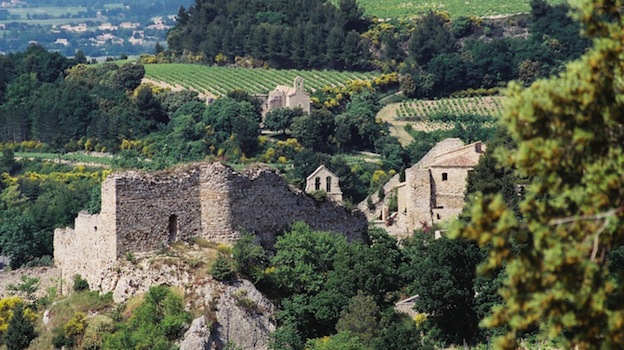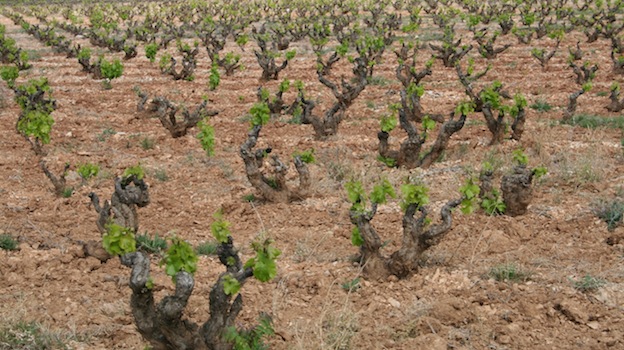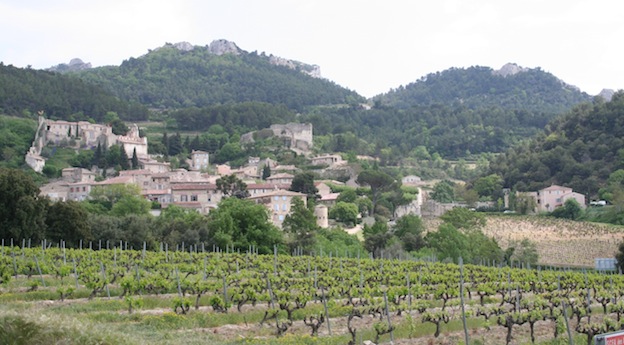Browse using the new Vinous website now. Launch →
Printed by, and for the sole use of . All rights reserved © 2015 Vinous Media
Gigondas — New Releases
Gigondas, like all of its neighboring appellations in the southern Rhône, suffered record losses to its Grenache crop in 2013, so producers were forced to respond in a variety of ways. All of them saw their overall production cut and many opted not to make—or severely reduced quantities of—their special cuvées, which are often based on old-vine Grenache plantings. The majority of wineries chose to increase the percentage of other grape varieties, especially Syrah and Mourvèdre, in their final blends, which has given many of the 2013s an intriguing measure of dark fruit, coupled with high acidity resulting from the late, slow growing season.

The ancient hillside village of Gigondas
A Look at the 2013s
Consumers can expect to find most 2013s from Gigondas
to be fresh and lively, with fruit character leaning more toward black cherry
and dark berries than the red fruits that mark typical vintages here. A classic
Gigondas, while undoubtedly a rich and full-bodied wine in the overall vinous
scheme of things, rarely shows the sheer mass, weight or power of a
Châteauneuf-du-Pape and alcohol levels tend to be lower as well. That’s
attributable to a number of factors, particularly the appellation’s location to
the north of Châteauneuf and the generally higher altitude of its vines. In
Gigondas there tends to be somewhat less Grenache and more Syrah and Mourvèdre
in play as well, which means that the 2013s are actually a bit less atypical
than most ‘13s produced in Châteauneuf, where the vineyards are almost all
planted more heavily to the early ripening and higher-alcohol Grenache.

Old Grenache vines in Gigondas in early spring
The User-Friendly 2012s
In the opinion of Thierry Faravel of Domaine de la Bouïssière, “2012 is one of those vintages that will appeal to a wide range of people, as the wines have the fruit to appeal on the young side and the concentration to age, if not for as long as, for example, 2010.” That view was shared by Romain Saurel at Domaine Saint-Damien, who told me that he was especially pleased with the red fruit and floral and spice character of the wines, which he said were reminiscent of Burgundy, albeit “from a warm vintage, of course.” Saurel said that because of the relatively lower acid levels in the 2012s they likely won’t be for long aging but should be at their best “somewhere around their seventh to tenth birthdays.” He added that he doubts the wines will ever really shut down “because the tannins are round and already harmonious.”

The village of Gigondas nestled into the hills of provence
Drink or Hold?
While I doubt that most 2012s from Gigondas will make old bones, as Anglophile old-timers used to say, it wouldn’t surprise me a bit if many of these wines were still cruising along after their tenth birthdays. Speaking from personal experience I’ve seen plenty of Gigondas from lighter, supposedly early-drinking vintages age gracefully. For example, bottles of the 1986 and 1988 from Domaines Cayron, Raspail-Ay and Gour de Chaulé can still be delicious now and, in finesse at least, can even outshine their riper and younger siblings from vintages like 1989, 1990 and even 1998. So don’t panic if you stock up on 2012s for near- and mid-term drinking and happen to lose a few bottles in your cellar: you might end up wishing that you’d lost more.
--Josh Raynolds
Show all the wines (sorted by score)
- Alain Jaume & Fils
- Arnoux et Fils
- Brotte
- Château de Montmirail
- Château du Trignon
- Château Raspail
- Château Redortier
- Clos du Joncuas
- Delas Frères
- Domaine Bertrand Stehelin
- Domaine Brunely
- Domaine Brusset
- Domaine Cécile Chassagne
- Domaine de Boissan
- Domaine de Cabasse
- Domaine de Durban
- Domaine de Fontavin
- Domaine de Font-Sane
- Domaine de la Mavette
- Domaine de la Tête Noire
- Domaine de la Tourade
- Domaine de Longue Toque
- Domaine de Montvac
- Domaine de Piaugier
- Domaine des Bosquets
- Domaine des Espiers
- Domaine des Florets
- Domaine des Pasquiers
- Domaine d'Ouréa
- Domaine du Bois des Mèges
- Domaine du Cayron
- Domaine du Gour de Chaulé
- Domaine du Grand Montmirail
- Domaine du Grapillon d'Or
- Domaine du Pesquier
- Domaine du Terme
- Domaine Font Sarade
- Domaine La Bouïssiere
- Domaine La Fourmone
- Domaine La Garrigue
- Domaine La Roubine
- Domaine La Soumade
- Domaine Le Clos des Cazaux
- Domaine Les Chênes Blancs
- Domaine Les Goubert
- Domaine Les Pallières
- Domaine Les Semelles de Vent
- Domaine Les Teyssonnières
- Domaine Montirius
- Domaine Notre Dame des Pallières
- Domaine Pallière et Pied-Gû
- Domaine Palon
- Domaine Raspail-Ay
- Domaine Saint-Damien
- Domaine Saint-François-Xavier
- Domaine Saint-Gayan
- Domaine Santa Duc
- Domaine Tourbillon
- E. Guigal
- Famille Perrin
- Famille Tardieu (Tardieu-Laurent)
- Gabriel Meffre
- Gigondas La Cave
- Grandes Serres
- La Bastide Saint Vincent
- La Compagnie Rhodanienne
- Lavau
- Les Halos de Jupiter
- Louis Bernard
- Mas des Restanques
- Moulin de la Gardette
- Ogier
- Olivier & Lafont
- Pierre Amadieu
- Pierre-Henri Morel
- Saint-Cosme
- Vidal-Fleury
- Vignerons de Caractère
- Vignobles Cheron
